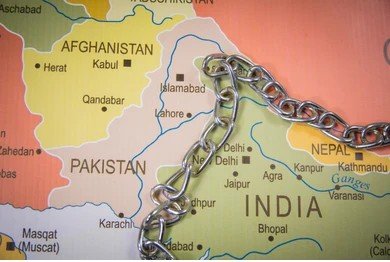How Narasimha Rao Chose Restraint Over Conflict With 50–60 Afghan Mujahideen
In the early 1990s, India was at a crossroads—economically, politically, and in terms of security. While the nation was recovering from an economic crisis, the winds of unrest blew through its borders. Among the challenges was a sudden infiltration of 50–60 armed Afghan mujahideen into Indian territory along the Jammu and Kashmir border. With tensions running high, the Border Security Force (BSF) stood ready to act. But one man—Prime Minister P. V. Narasimha Rao—stood firmly in the way of an all-out armed retaliation.
This little-known episode, now brought into the spotlight through a recently released book, paints a compelling portrait of leadership, restraint, and strategic foresight at a time when pulling the trigger could have set off a domino of irreversible consequences.
A Crisis at the Border
It was not uncommon for border skirmishes and infiltration attempts to occur in Jammu and Kashmir. But what happened during that period was far from a routine incursion. The 50–60 men who crossed the Line of Control were not just regular insurgents; they were battle-hardened mujahideen from Afghanistan, trained in guerrilla warfare, experienced from their decade-long fight against the Soviets, and now refocused on stirring unrest in India.
The BSF, aware of the high stakes, prepared to launch a counter-offensive. Commanders on the ground urged action. A direct confrontation seemed inevitable. But before a single bullet was fired, word came down from the top office.

Narasimha Rao’s Refusal to Escalate
Narasimha Rao’s directive was clear—no military engagement without further orders. For many, this appeared to be a moment of hesitation. But Rao was not hesitating; he was calculating.
His refusal to engage wasn’t a sign of weakness. It was a reflection of a deeper understanding of international geopolitics, domestic sentiment, and long-term consequences. Rao knew that shooting Afghan mujahideen, even if justified, would invite severe retaliation from Pakistan and could open a fresh front in India’s security nightmare. The optics of Indian forces killing Islamic fighters could have been dangerously twisted into a narrative of religious oppression—something India, a secular democracy, could not afford.
The Man Behind the Mind
Rao’s personality has often been described as quiet, inscrutable, even aloof. But those close to him knew better. He was not loud, but he listened deeply. He did not act impulsively, but his silence was never idle. In that crucial moment, it was his silence and decision not to retaliate that saved countless lives.
He believed that sometimes restraint is not cowardice but courage in its rarest form. By refusing to match fire with fire, Rao displayed a statesman’s maturity and an academic’s understanding of complex conflict resolution.
What India Could Have Lost
Let’s imagine the alternative. If the BSF had been given the green light to engage, the skirmish could have escalated into a localized war. Pakistan’s military would likely have used it as a pretext for greater involvement. International headlines would scream of an “Indian assault on Muslim fighters,” further complicating India’s image on the global stage.
Internally, it could have incited a surge of unrest in the already fragile Kashmir valley. The 1990s were already witnessing the rise of insurgency, and such an action would have poured fuel on an already growing fire. Communal tensions across India would have worsened, leading to unrest, riots, and perhaps, a deeper internal divide.
Rao prevented not just a shootout. He potentially averted a regional war.
The Global Context: Why Rao Was Thinking Ahead
At the time, the world was adjusting to the post-Cold War order. Afghanistan was a fractured land, and mujahideen fighters were being redirected across South Asia. Intelligence agencies across the globe were tracking the movement of these guerrilla forces. Rao was aware of this changing chessboard.
By avoiding an encounter with Afghan fighters, India sidestepped becoming a pawn in a larger game of proxy wars. India maintained its position as a responsible power rather than becoming a reactionary state.
Backlinks to Rao’s Foreign Policy Approach
This incident ties into Rao’s broader vision for India’s place in the world. His government established diplomatic ties with Israel, opened up to ASEAN countries, and pushed for economic liberalization. He was reshaping India’s identity not just as a regional power, but as a global player.
And what he demonstrated on the border that day was part of that strategy—long-term vision over short-term victories.
Rao’s restraint also aligned with his view on internal security. He initiated back-channel talks, opened up lines of communication, and quietly worked to contain violence rather than showcase a muscular reaction. His was the leadership of calm precision.
The Politics of Perception
Rao’s action—or deliberate inaction—did not go unnoticed within political circles. Critics whispered that he lacked boldness. But time has been kinder than his contemporaries. Today, with the benefit of hindsight, Rao’s decision stands as a masterclass in conflict de-escalation.
He did not crave applause, nor did he demand loyalty. His politics was that of substance over spectacle, results over rhetoric.
In a world where leaders are often judged by the noise they make, Rao made his mark through silence. This moment at the border was not a missed opportunity for India to show strength—it was a bold display of real strength.
Legacy of That Moment
The book that uncovers this incident does more than share a forgotten story—it reminds us that leadership is not always about pulling triggers. Sometimes, it’s about knowing when not to.
For modern India, where aggressive posturing often becomes a political currency, Rao’s example is a refreshing counter-narrative. It’s a call to remember that restraint is also power—especially when exercised in the interest of the nation.

A Lesson in Today’s Times
As India continues to navigate complex border dynamics, insurgent threats, and diplomatic puzzles, Rao’s choice remains deeply relevant. In an era dominated by quick decisions and public declarations, his method of silent strategy feels almost radical.
There will be more moments in India’s future where the temptation to respond with force will be strong. When they come, Rao’s moment with the BSF and the Afghan mujahideen will serve as a lighthouse—showing that sometimes, the best battle is the one that never had to be fought.
Final Thought
This excerpt from the book doesn’t just tell a story—it offers a powerful reminder that true leadership often lies not in making the loudest noise, but in knowing when silence can save lives.
P. V. Narasimha Rao may have been one of India’s most underrated prime ministers, but in that one decision, he exhibited the wisdom, foresight, and courage that only history can fully appreciate.
And in doing so, he gifted the nation something priceless—peace without a single shot fired.
Ream More: Assam’s Bold Revival of Historic Law Secures Border Integrity









Leave a comment